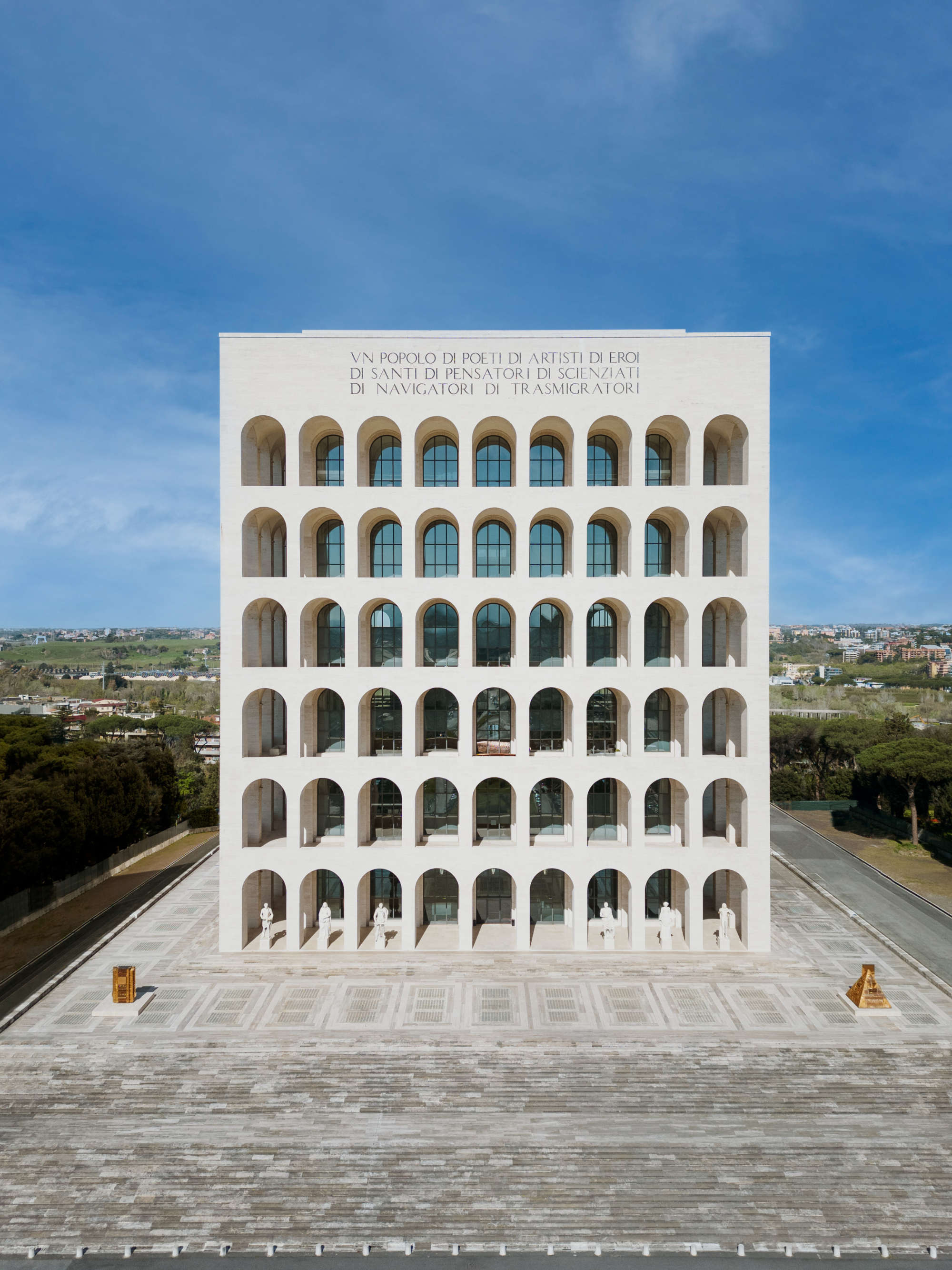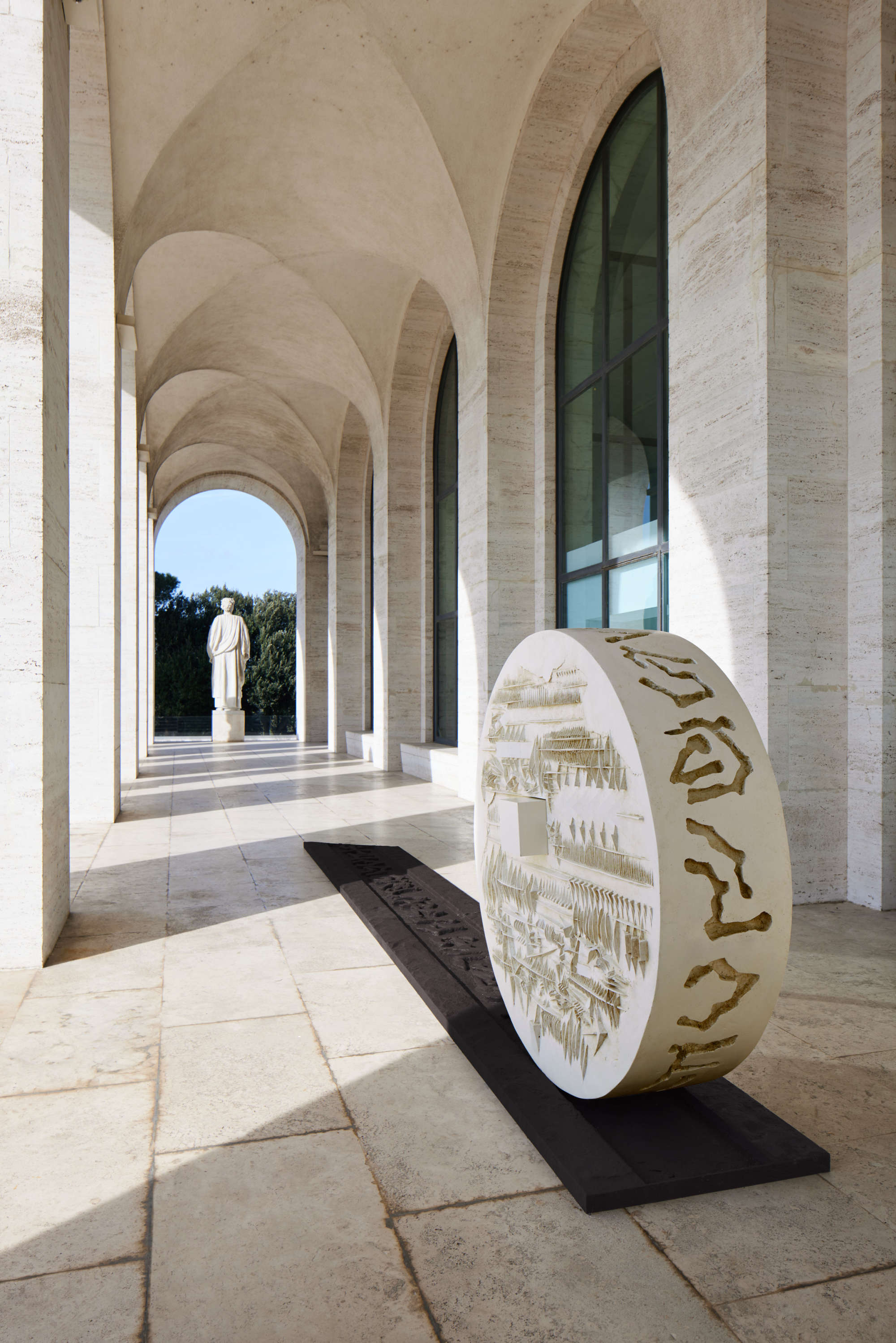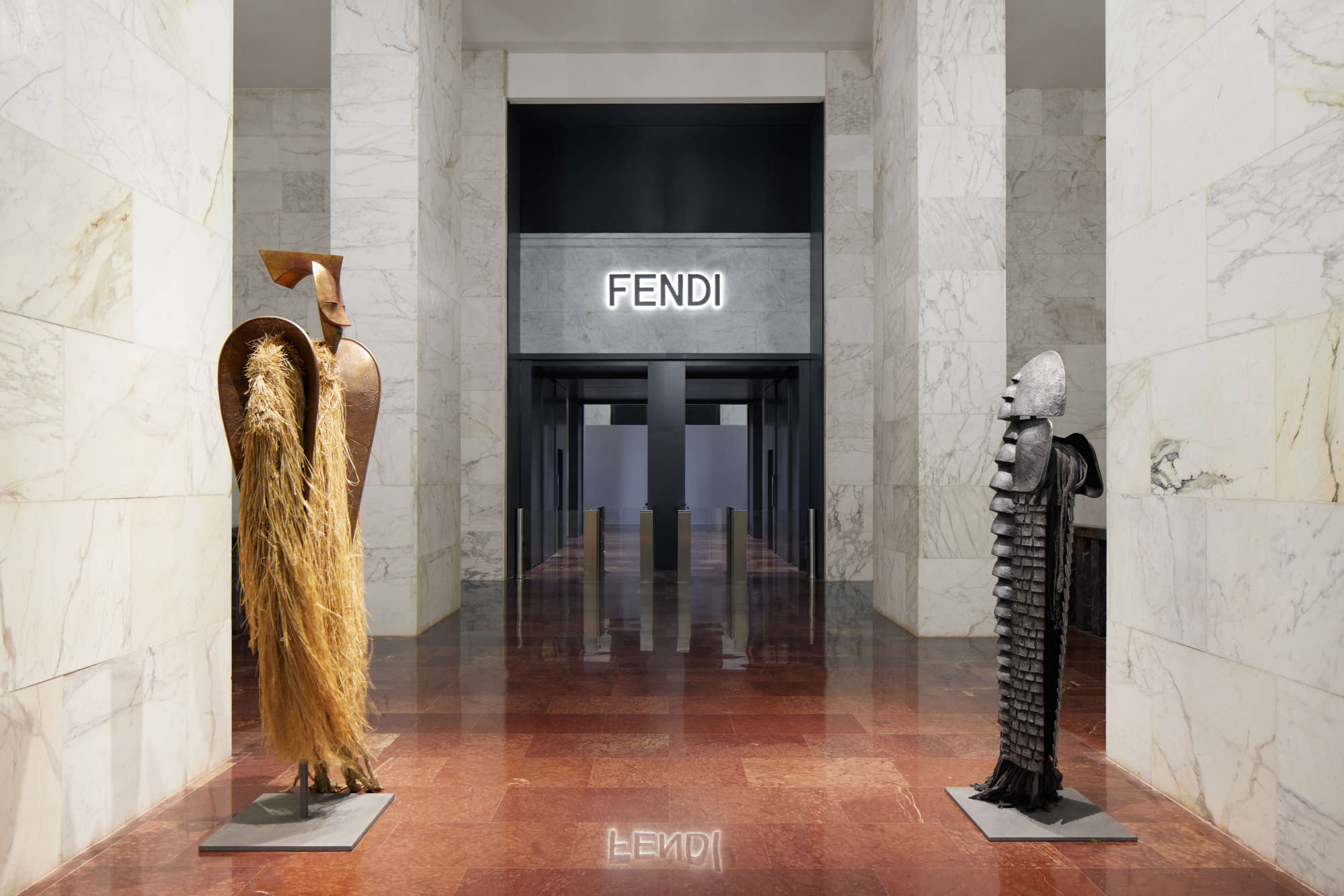
Fendi-backed celebration of Italian sculptor Arnaldo Pomodoro’s work spans theatre costumes, set designs and the duality of his art
- Fendi’s Rome headquarters is hosting ‘The Great Theatre of Civilisations’, a career-spanning exhibition of the work of Italian sculptor Arnaldo Pomodoro
- As well as his art, which includes a reimagining of Fendi’s Peekaboo bag, the show features the artist’s theatrical costumes, set designs and sketches
To the casual eye, the Palazzo della Civiltà Italiana (PDCI) – the Colosseum-inspired icon of Italian fascist architecture in Rome’s Esposizione Universale Roma district – strikes one as an interesting place to house “The Great Theatre of Civilisations”, an exhibition celebrating the career of sculptor Arnaldo Pomodoro.
Visitors can glimpse the PDCI as they journey from Fiumicino airport to Rome’s city centre, but its facade is especially imposing when viewed in person. Seeing the building’s pristine arches up close, surrounded by architecture from the same period, makes it feel as if you have landed in an alternate universe and an alternate Italy.
In collaboration with Fondazione Arnaldo Pomodoro, a foundation, the exhibition, which is free to visit until October 1, has been brought to the public by fashion house Fendi, which has called the PDCI its headquarters since 2015.
By the entrance to the exhibition is a collaboration with the artist in the form of Fendi’s Peekaboo bag, reimagined in bronze and flanked by dramatic spikes.

It is only once you view the exhibition, curated by Lorenzo Respi and Andrea Viliani, that the choice of setting makes sense.
Not only does its austere stone facade focus your attention on Pomodoro’s bronze sculptures, scenographic sketches and documents detailing his inspirations, the site plays its role in a wider dialogue about the artist, whose work is centred around the rise and fall of civilisations.

That the building is a modernist monument drawing from Roman architecture is apt, considering the dualities in Pomodoro’s work: movement and disequilibrium, positive and negative space, past and future, minimalism and expressionism.
His dedication to contrast is especially resonant in pieces like Grande Tavola Della Memoria (Great Table of Memory, 1959-1965): its large rectangular form resembles a motherboard cast in bronze, but is densely packed with “excavations” that reference ancient fossils while laying out the sculptor’s own made-up hieroglyphic signs.
This alphabet, which runs like a thread through much of Pomodoro’s work, taps into the ancient moulding technique of cuttlebone casting, which he learned at a goldsmith’s workshop in Pesaro, a town on Italy’s Adriatic coast.

Born in Montefeltro in 1926, Pomodoro was raised and educated in Pesaro, where he consulted on the restoration of public architecture as a civil engineer after the second world war. All the while, he worked as a goldsmith and studied stage design – and all three practices materialised in some way or another in his art in the decades that followed his first sculpture show in 1955.
The artist cites a Eureka moment he had upon seeing the pristine and elegant work of Romanian modernist sculptor Constantin Brancusi at New York’s Museum of Modern Art in 1959.
“Looking at those sculptures was like a ‘bolt of lightning’ for me,” an excerpt at the exhibition reads. “It triggered a desire within for destruction, so I imagined them as moth-eaten, corroded.”

Many of the works he produced in the aftermath – such as Il Cubo (The Cube, 1961-1962), which is on display at the PDCI – or the series Sfera con Sfera (Sphere Within Sphere, beginning in the 1960s) – adopt Euclidean geometric forms, are cast in bronze and feature “internal perforations and lacerations” that “highlight the problematic nature and vitality inherent to matter itself”.
These choices reflected world events. Pomodoro described in a 2016 interview with art magazine Studio International how US President John F Kennedy’s assassination in 1963 inspired him to capture the event through a similar bronze sculpture.
“We were living through a moment of great tension and unrest, seeking new values, and Kennedy’s assassination seemed like the end of all hope and potential for restorative political action,” Pomodoro said.

But it is not all doom and gloom. Pomodoro’s driving force is curiosity: it is mentioned by our guide that, as a child, he delighted in opening and examining toys, and finding out for himself the inner functions of things.
It is no surprise he became friends with the likes of painter Lucio Fontana, whose famous slashed canvases exhibited a similar desire to excavate seemingly perfect surfaces.
Indeed, in his work, even the building blocks of civilisation – the columns that held up ancient Rome, and pyramids, known for their stability – are not just fallible; they house distinct energies he evokes through a skeleton-like code, exposed in cracks and fissures that disturb otherwise lustrous surfaces.

During a tour of Pomodoro works displayed in public and private spaces throughout Rome, our guide suggests that Sfera con Sfera inspired the Death Star weapon in Star Wars, a parallel both believable and fitting if true.
In the exhibition, the desire to see two sides – the yin and yang, if you will – is echoed by the positioning of large-scale works Movimento in Piena Aria e nel Profondo (Movement in the Open Air and in the Depths, 1996-97) and Le Battaglie (The Battles, 1995) facing each other on opposite sides of the main galleries.
Alone and together, the works convey the chaotic intersection of artistic movements from expressionism to surrealism, and compress various perspectives into a seemingly fossilised relic.

Again, one appreciates the significance of displaying Pomodoro’s work in a Mussolini-era building constructed as a symbol of fascist power: the inevitable decline of rulers and the cyclical nature of history – a theme explored by artists from Percy Shelley to Christopher Isherwood – can be reassuring. Indeed, Pomodoro has been quoted as saying: “History is always the same.”
Though the show’s biggest draw is undoubtedly Pomodoro’s large-scale sculptures, it also does service to his theatrical work.
By the exhibition’s entrance are the costumes he created for Christopher Marlowe’s Dido, Queen of Carthage performed in the ruins of Gibellina, Sicily, in 1986 – and for Creonte, the king of Thebes, in Igor Stravinsky’s opera Oedipus Rex, performed in Siena, Italy, in 1988. Both pieces serve to tether Pomodoro’s work to the wearable realm of Fendi, while evoking his diverse training.

Indeed, some of my favourite exhibits were the documentation and images of his costumes and sets, including a series of sketches of Creonte’s Kafkaesque armour, and photos of actors on stage dwarfed by a bronze wall adorned, once again, by clusters of the Pomodoro code.

